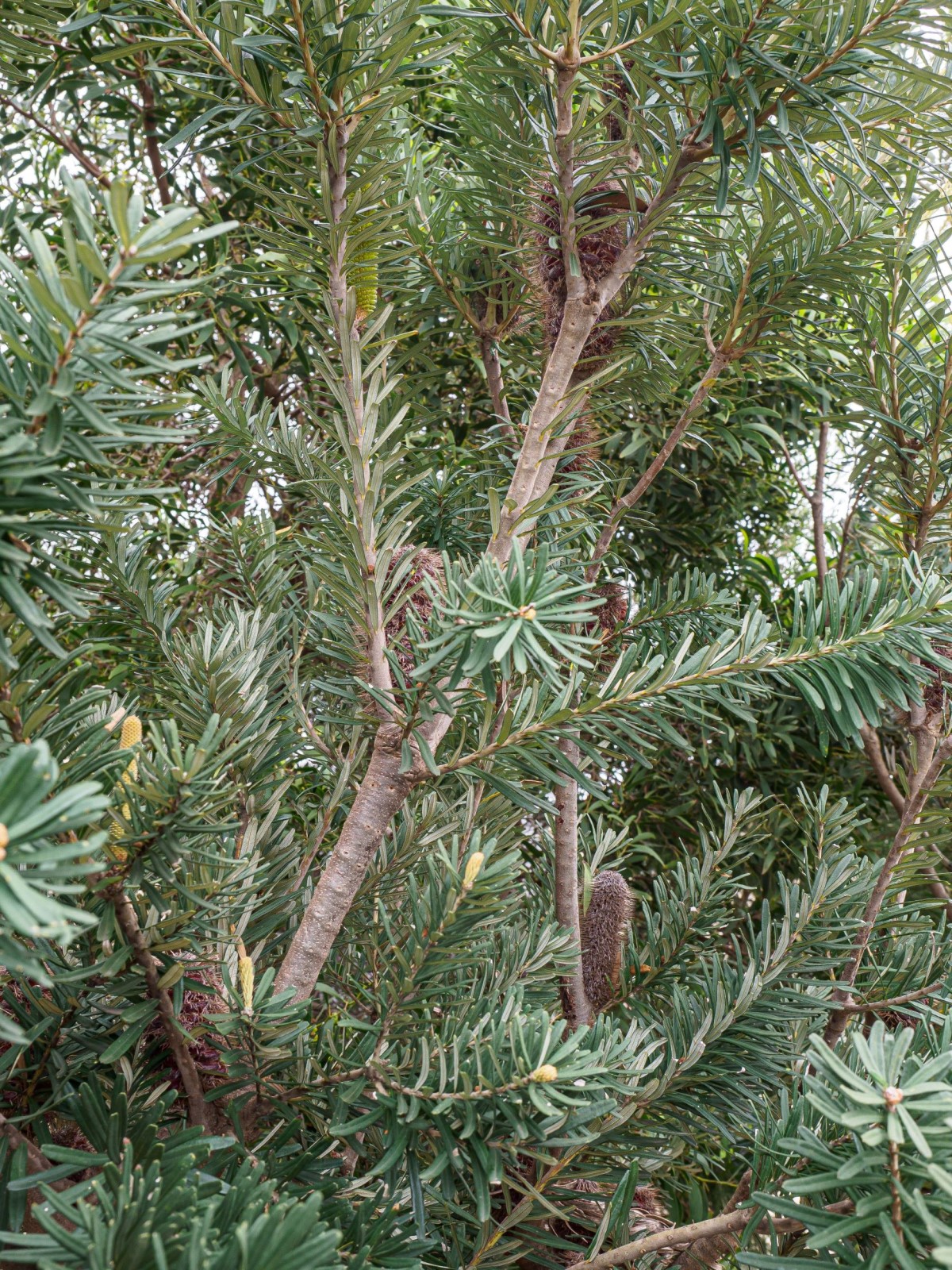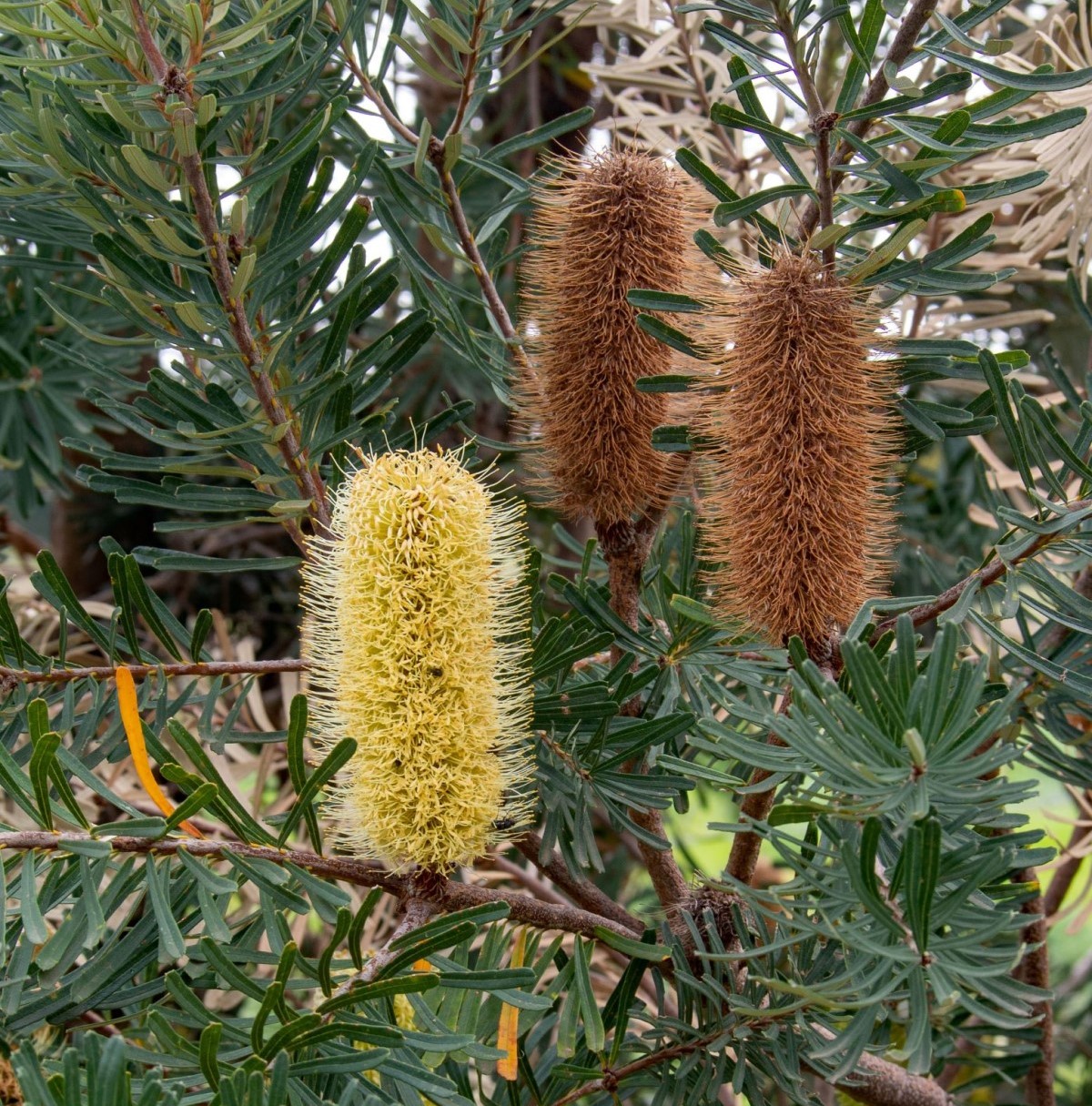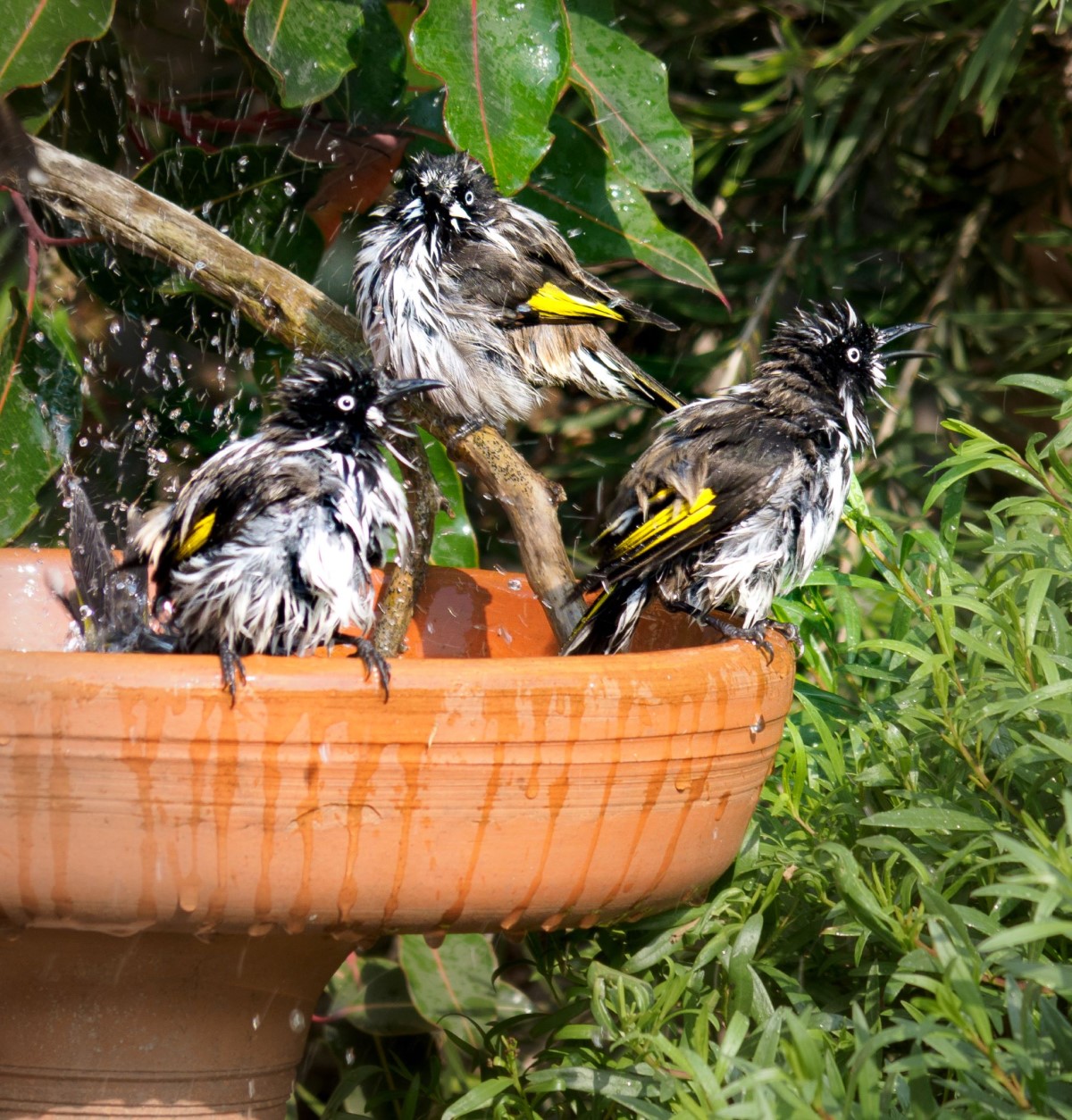
Nectar plants for honeyeaters

Robyn Curtis
Robyn and Peter built a new home at The Point. The garden was still a building site when our Garden Guides visited. The vision was to create a garden that was a productive food source for Robyn and Peter and an attraction for birds and other local wildlife.
It was a big challenge for Robyn and Peter to create a garden from scratch while keeping true to their vision. With advice and plants sourced from the Queenscliffe Indigenous Nursery, the garden has become a haven for birds and insects. It has taken just five years to be transformed from bare earth to a pleasant environment.
A Silver Banksia was planted as a feature tree in the north-west corner and is already nine metres tall and several metres wide. The tree has grown quickly and acts as a windbreak, screens out neighbours, provides shade and shelters birds. Its flowers are also a food source for honeyeaters and insects. Two Moonah trees and a Black Sheoak in the front garden provide more food and shelter for small birds.
Non-indigenous bottlebrushes and several grevillea bushes are the big attraction for honeyeaters. The intention is to provide a food source for much of the year through nectar-flowering trees and shrubs.
An understorey of Common Correa, Silky Guinea-flower and many other small plants are also supplementing the food supply for small birds. Interestingly, the New Holland Honeyeaters also enjoy nectar from flowers of the passionfruit vine and feijoa and lemon trees

Robyn Curtis

Robyn Curtis
Robyn said that the ‘greatest delight are the daily visits of New Holland Honeyeaters with their whistles and chatter and antics in the bird bath. Red Wattlebirds also share the bounty of flowering plants. Occasionally Superb Fairy-wrens forage in the grasses for seeds and insects. So far there are no nests in the garden, but I hope some small birds may decide to move from the nearby conservation zone and set up home in my garden.
It is heartening to see that the developers of the new housing area at The Point have retained some existing trees and land for conservation, as well as extensively planting mostly indigenous trees, shrubs and salt marsh plants.’

